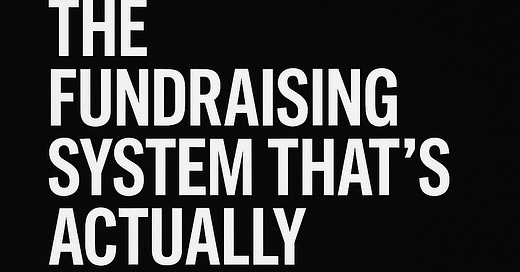Why Most Founders Fail to Raise in 2025 And How You Won’t
The new playbook for closing €500k–€5M rounds without wasting 90 days on hope and warm intros
Dear Founders,
Let me level with you.
Most fundraising advice you read online is either two years too late, regurgitated by people who haven’t raised a cent, or copy-pasted from a Twitter thread that gets applause but no meetings.
That’s not this. What you’re about to read is what we actually hand to our portfolio founders, the ones raising €500k pre-seed …



